#Sir Edward Landseer
Text

Edward Landseer (1802-1873), 'The Marmosets', ''St. Nicholas'', Vol. 2, #5, 1875
Source
#Edward Landseer#Sir Edward Landseer#english artists#marmosets#st. nicholas#st. nicholas magazine#vintage illustration#vintage art#etchings
42 notes
·
View notes
Photo
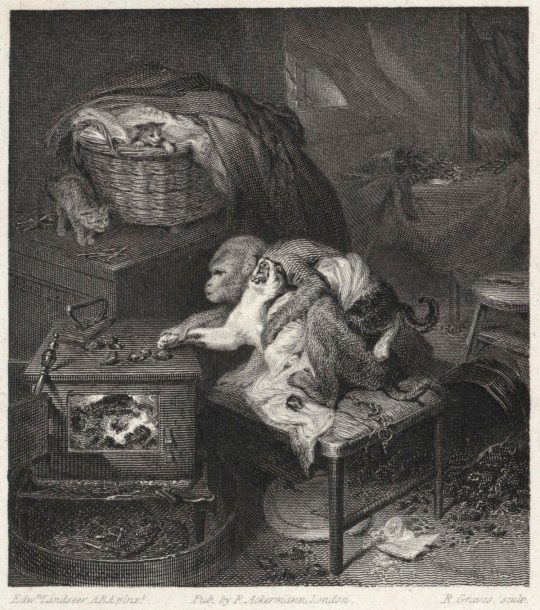
The Cat's Paw, 1829
after Sir Edwin Landseer, 1824
230 notes
·
View notes
Text

Queen Victoria and Prince Albert dressed as the medieval monarchs Edward III and his consort Queen Philippa of Hainault in 1842 for the Queens costume ball. 🎨 Sir Edwin Landseer.
#queen victoria#prince albert#sir edwin landseer#edwin landseer#ktd#british royal family#throwback#brf#art#art history#artwork#medieval#medieval core#Edward iii#queen Philippa#royalty#middle ages#history#victorian#1840s#19th century
44 notes
·
View notes
Text

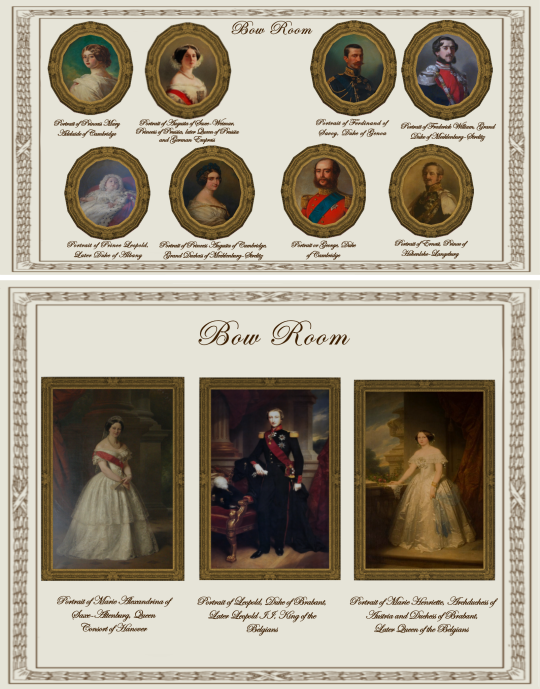
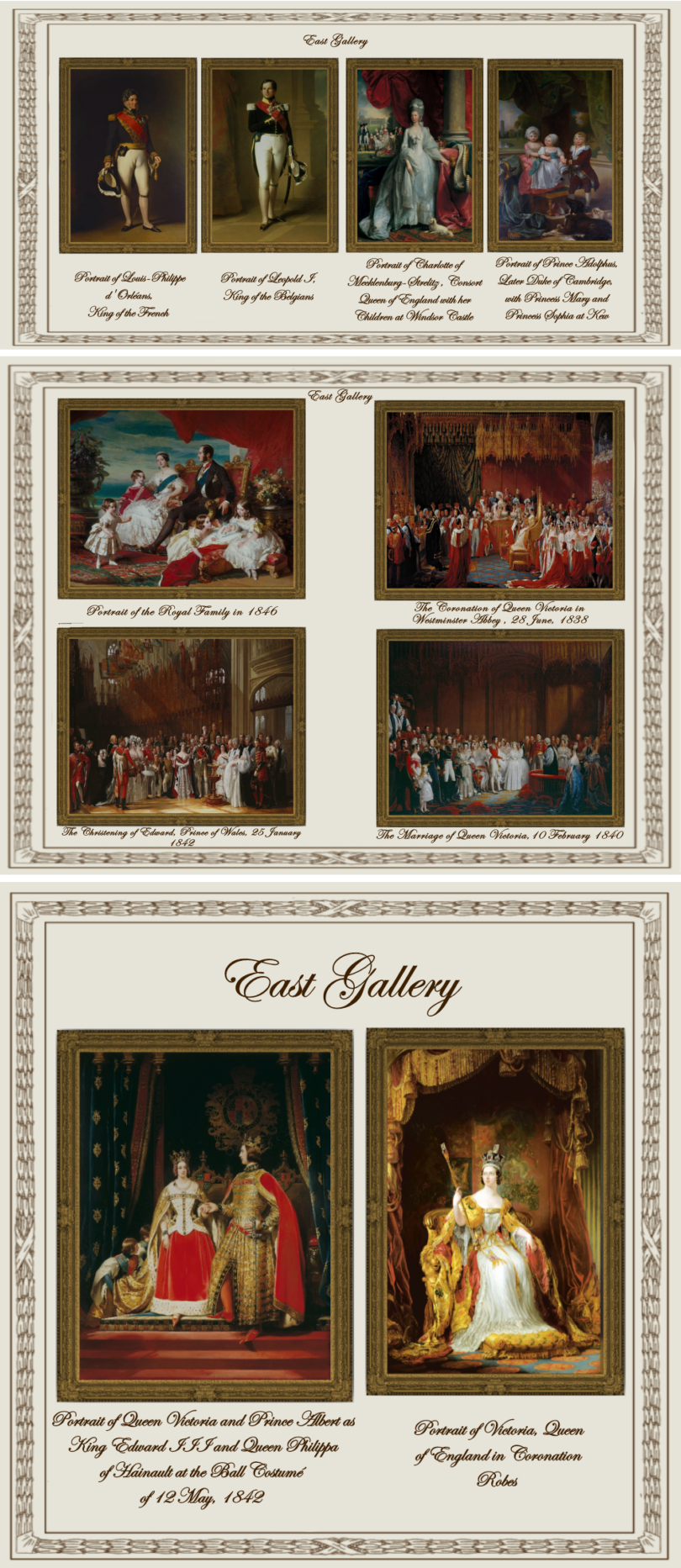
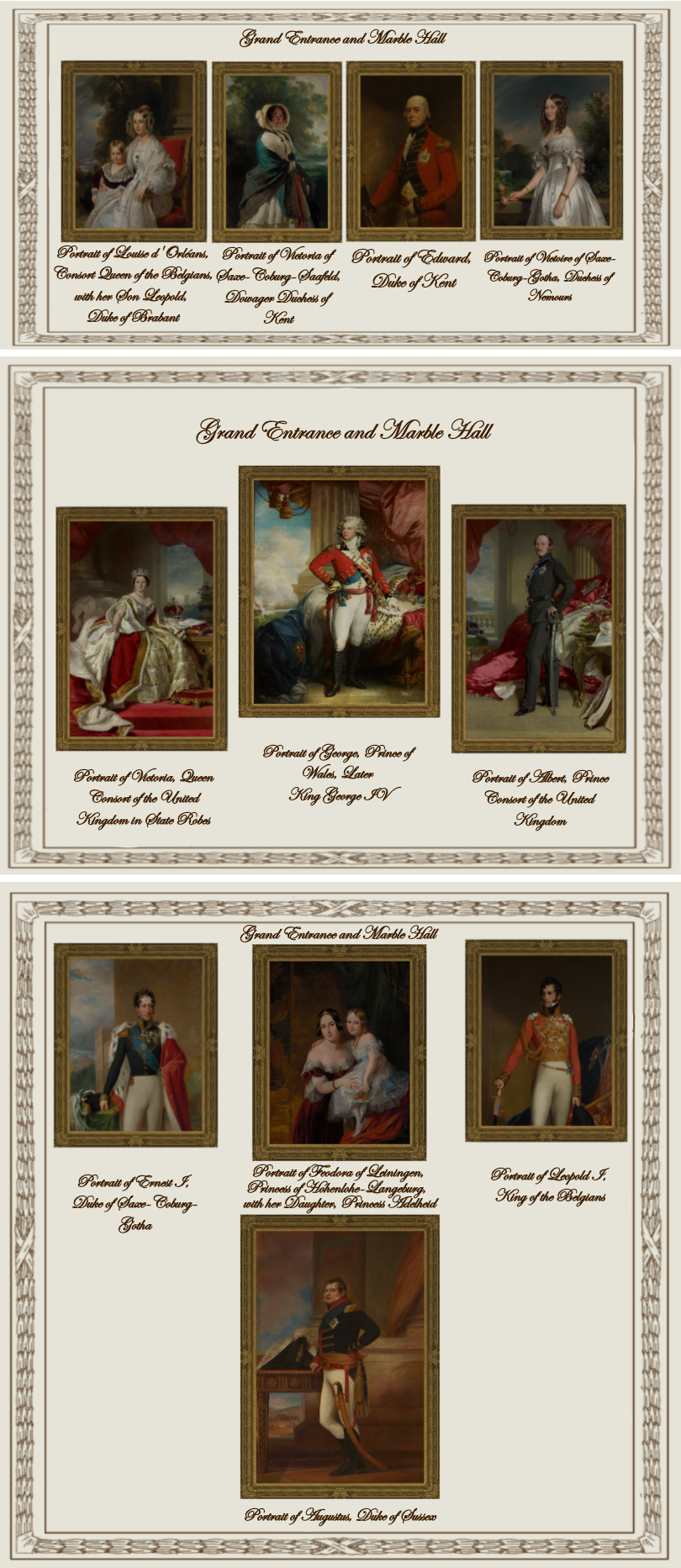

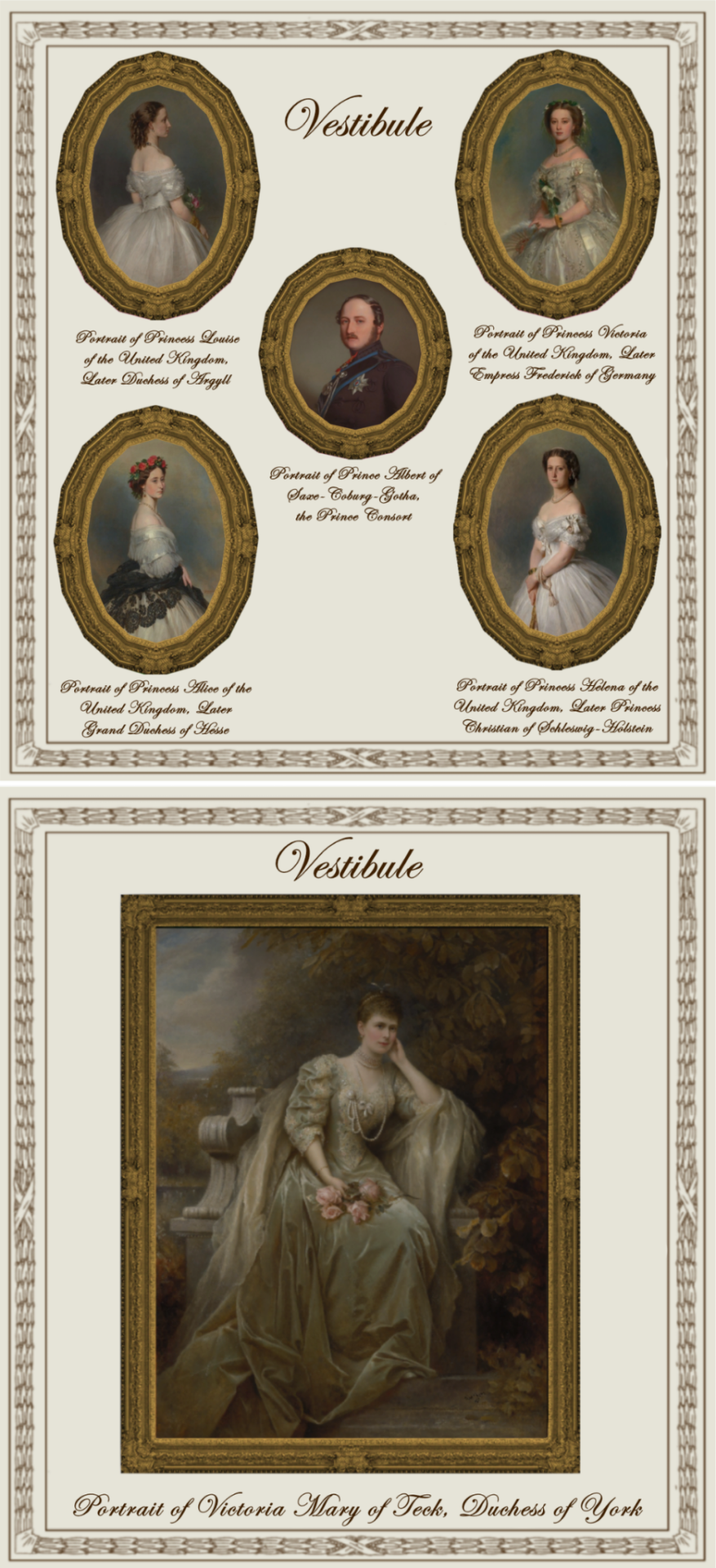


Paintings from Buckingham Palace: part II
A retexture by La Comtesse Zouboff — Original Mesh by @thejim07
Spread among 13 occupied and historic royal residences in the United Kingdom, the collection is owned by King Charles III and overseen by the Royal Collection Trust. The British monarch owns some of the collection in right of the Crown and some as a private individual. It is made up of over one million objects, including 7,000 paintings, over 150,000 works on paper, this including 30,000 watercolours and drawings, and about 450,000 photographs, as well as around 700,000 works of art, including tapestries, furniture, ceramics, textiles, carriages, weapons, armour, jewellery, clocks, musical instruments, tableware, plants, manuscripts, books, and sculptures.
Some of the buildings which house the collection, such as Hampton Court Palace, are open to the public and not lived in by the Royal Family, whilst others, such as Windsor Castle, Kensington Palace and the most remarkable of them, Buckingham Palace are both residences and open to the public.
About 3,000 objects are on loan to museums throughout the world, and many others are lent on a temporary basis to exhibitions.
-------------------------------------------------------
The second part includes paintings displayed in the Ball Supper Room, the Ballroom, the Ballroom Annexe, the Bow Room, the East Gallery, the Grand Entrance and Marble Hall, the Minister's Landing & Staircase, the Vestibule, the Chinese Dining Room and the Balcony Room.
This set contains 57 paintings and tapestries with the original frame swatches, fully recolourable. They are:
Ball Supper Room (BSR):
Portrait of King George III of the United Kingdom (Benjamin West)
Ballroom (BR):
The Story of Jason: The Battle of the Soldiers born of The Serpent's Teeth (the Gobelins)
The Story of Jason: Medea Departs for Athens after Setting Fire to Corinth (the Gobelins)
Ballroom Annexe (BAX):
The Apotheosis of Prince Octavius (Benjamin West)
Bow Room (BWR):
Portrait of Princess Mary Adelaide of Cambridge (William Corden the Younger)
Portrait of Princess Augusta of Cambridge, Grand Duchess of Mecklenburg-Strelitz (Alexander Melville)
Portrait or George, Duke of Cambridge (William Corden the Younger)
Portrait of Frederick William, Grand Duke of Mecklenburg-Strelitz (Franz Xaver Winterhalter)
Portrait of Augusta of Saxe-Weimar, Princess of Prussia, later Queen of Prussia and German Empress (Franz Xaver Winterhalter)
Portrait of Prince Leopold, Later Duke of Albany (Franz Xaver Winterhalter)
Portrait of Ernest, Prince of Hohenlohe-Langeburg (Franz Xaver Winterhalter)
Portrait of Ferdinand of Savoy, Duke of Genoa (Eliseo Sala)
Portrait of Marie Alexandrina of Saxe-Altenburg, Queen Consort of Hanover (Carl Ferdinand Sohn)
Portrait of Leopold, Duke of Brabant, Later Leopold II, King of the Belgians (Nicaise de Keyser)
Portrait of Marie Henriette, Archduchess of Austria and Duchess of Brabant, Later Queen of the Belgians (Nicaise de Keyser)
East Gallery (EG):
Portrait of Leopold I, King of the Belgians (Franz Xaver Winterhalter)
Portrait of Victoria, Queen of England in Coronation Robes (Sir George Hayter)
Portrait of Louis-Philippe d'Orléans, King of the French (Franz Xaver Winterhalter)
Portrait of Charlotte of Mecklenburg-Strelitz, Consort Queen of England with her Children at Windsor Castle (Benjamin West)
Portrait of Prince Adolphus, later Duke of Cambridge, With Princess Mary and Princess Sophia at Kew (Benjamin West)
The Coronation of Queen Victoria in Westminster Abbey, 28 June, 1838. (Sir George Hayter)
The Christening of Edward, Prince of Wales 25 January, 1842 (Sir George Hayter)
The Marriage of Queen Victoria, 10 February, 1840 (Sir George Hayter)
Portrait of the Royal Family in 1846 (Franz Xaver Winterhalter)
Portrait of Queen Victoria and Prince Albert as King Edward III and Queen Philippa of Hainault at the Ball Costumé of 12 May, 1842 (Sir Edwin Landseer)
Grand Entrance and Marble Hall (GEMH):
Portrait of Edward, Duke of Kent (John Hoppner)
Portrait of Ernest I, Duke of Saxe-Coburg-Gotha (George Dawe)
Portrait of Victoria of Saxe-Coburg-Saafeld, Dowager Duchess of Kent (Franz Xaver Winterhalter)
Portrait of Albert, Prince Consort of the United Kingdom (Franz Xaver Winterhalter)
Portrait of Victoria, Queen Consort of the United Kingdom in State Robes (Franz Xaver Winterhalter)
Portrait of Louise d'Orléans, Consort Queen of the Belgians, with her Son Leopold, Duke of Brabant (Franz Xaver Winterhalter)
Portrait of Feodora of Leiningen, Princess of Hohenlohe-Langeburg, with her Daughter, Princess Adelheid (Sir George Hayter)
Portrait of George, Prince of Wales, Later King George IV (Mather Byles Brown)
Portrait of Victoire of Saxe-Coburg-Gotha, Duchess of Nemours (Franz Xaver Winterhalter)
Portrait of Augustus, Duke of Sussex (Domenico Pellegrini)
Portrait of Leopold I, King of the Belgians (William Corden the Younger)
Minister's Landing and Staircase (MLS):
Portrait of George, Prince of Wales in Garther Robes (John Hoppner)
The Loves of the Gods: The Rape of Europa (the Gobelins)
The Loves of the Gods: The Rape of Proserpine (The Gobelins)
Vestibule (VL):
Portrait of Prince Albert of Saxe-Coburg-Gotha, the Prince Consort (Unknown Artist from the German School)
Portrait of Princess Alice of the United Kingdom, Later Grand Duchess of Hesse (Franz Xaver Winterhalter)
Portrait of Princess Helena of the United Kingdom, Later Princess Christian of Schleswig-Holstein (Franz Xaver Winterhalter)
Portrait of Princess Louise of the United Kingdom, Later Duchess of Argyll (Franz Xaver Winterhalter)
Portrait of Princess Victoria of the United Kingdom, Later Empress Frederick of Germany (Franz Xaver Winterhalter)
Portrait of Victoria Mary of Teck, Duchess of York (Edward Hughes)
Chinese Dining Room or Pavilion Breakfast Room(CDR):
Set of Four Painted Chinoiserie Wall panels I (Robert Jones)
Set of Four Painted Chinoiserie Wall panels II (Robert Jones)
Set of Four Painted Chinoiserie Wall panels III (Robert Jones)
Set of Four Painted Chinoiserie Wall panels IV (Robert Jones)
Balcony Room or Centre Room (BR):
Chinoiserie Painted Panel I (Robert Jones)
Chinoiserie Painted Panel II (Robert Jones)
Chinoiserie Painted Panel III (Robert Jones)
Chinoiserie Painted Panel IV (Robert Jones)
EXTRAS! (E):
I decided to add the rest of the tapestries from the story of Jason (wich hangs in the Grand Reception Room at Windsor Castle) and (with Jim's permission) added the original mesh for paintings number 2,3,4 & 5 from the Vestibule (seen here and here) wich was never published. These items are:
The Story of Jason: Jason Pledges his Faith to Medea (the Gobelins)
The Story of Jason: Jason Marries Glauce, Daughter of Creon, King of Thebes (the Gobelins)
The Story of Jason: The Capture of the Golden Fleece (the Gobelins)
The Story of Jason: The Poisoning of Glauce and Creon by Medea's Magic Robe (the Gobelins)
Sea Melodies (Herbert James Draper) (made by TheJim07)
-------------------------------------------------------
Found under decor > paintings for:
500§ (BWR: 1,2,3,4,5,6, & 8 |VL: 1)
570§ (VL: 2,3,4 & 5 |E: 5)
1850§ (GEMH: 1 & 3)
2090§ (GEMH: 2,6,7, 9 & 11)
3560§ (GEMH: 4,5 & 10 |BSR: 1 |EG: 1,2,3,4 & 5 |MLS: 1 |BAX: 1)
3900§ (CDR: 1,2,3 & 4 |BR: 1,2,3 & 4 |EG: 10 |VL: 6 |GEMH: 8)
4470§ (MLS: 2 |E: 1)
6520§ (BR 1 & 2| MLS: 3 |EG: 6,7,8 & 9 |BR: 1 & 2 |E: 2,3 & 4)
Retextured from:
"Saint Mary Magdalene" (BWR: 1,2,3,4,5,6, & 8 |VL: 1) found here.
"Sea Melodies" (VL: 2,3,4 & 5 |E: 5)
"The virgin of the Rosary" (GEMH: 1 & 3) found here.
"Length Portrait of Mrs.D" (GEMH: 4,5 & 10 |BSR: 1 |EG: 1,2,3,4 & 5 |MLS: 1 |BAX: 1) found here
"Portrait of Maria Theresa of Austria and her Son, le Grand Dauphin" (CDR: 1,2,3 & 4 |BR: 1,2,3 & 4 |EG: 10 |VL: 6 |GEMH: 8) found here
"Sacrifice to Jupiter" (MLS: 2 |E: 1) found here
"Vulcan's Forge" (BR 1 & 2| MLS: 3 |EG: 6,7,8 & 9 |BR: 1 & 2 |E: 2,3 & 4) found here
(you can just search for "Buckingham Palace" using the catalog search mod to find the entire set much easier!)
Disclaimer!
Some paintings in the previews look blurry but in the game they're very high definition, it's just because I had to add multiple preview pictures in one picture to be able to upload them all! Also sizes shown in previews are not accurate to the objects' actual sizes in most cases.
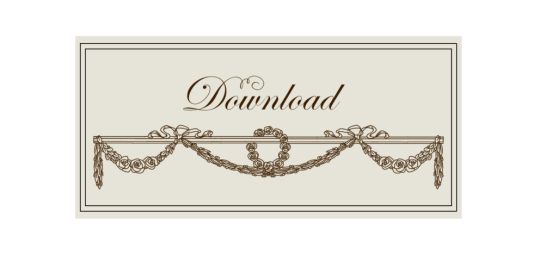
Drive
(Sims3pack | Package)
(Useful tags below)
@joojconverts @ts3history @ts3historicalccfinds @deniisu-sims @katsujiiccfinds @gifappels-stuff
-------------------------------------------------------
#the sims 3#ts3#sims 3#s3cc#sims 3 cc#sims 3 download#sims 3 decor#edwardian#victorian#regency#georgian#buckingham#buckingham palace#wall decor#sims 3 free cc#large pack#this was exhausting
48 notes
·
View notes
Text
The Coronation Procession
This week I spent a few days in London, so I decided to walk the route that the newly coronated King Charles III and Queen Camilla will take, called the Coronation Procession! The Kings Procession, before the service is this route, just in reverse. I took pictures of the highlights of the route, it will definitely be something to look back on in the future!

Westminster Abbey
Founded in 960 and consecrated in 1065, Westminster Abbey, has seen the coronations of 39 English and British monarchs and 16 royal weddings and is the burial site for 18 English, Scottish and British monarchs.

Whitehall, Downing Street and Horse Guards Parade
Whitehall is recognised as the centre of the Government of the United Kingdom and is lined with numerous departments and ministries, including the Ministry of Defence, Horse Guards and the Cabinet Office. The Palace of Whitehall previously occupied the area and was the residence of Kings Henry VIII through to William III, before it was destroyed by fire in 1698; only the Banqueting House has survived. As well as government buildings, the street is known for its memorial statues and monuments, including the UK's primary war memorial, the Cenotaph and the Women of World War Two memorial.
Downing Street was built in the 1680s by Sir George Downing. For more than three hundred years, it has held the official residences of both the First Lord of the Treasury, the office now synonymous with that of the Prime Minister, and the Second Lord of the Treasury, the office held by the Chancellor of the Exchequer. The Prime Minister's official residence is 10 Downing Street, and the Chancellor's official residence is Number 11. The government's Chief Whip has an official residence at Number 12. In practice, these office-holders may live in different flats; the current Chief Whip actually lives at Number 9.
Horse Guards Parade is a large parade ground off Whitehall. It is the site of the annual ceremonies of Trooping the Colour, which commemorates the monarch's official birthday, and the Beating Retreat. Horse Guards Parade was formerly the site of the Palace of Whitehall's tiltyard, where tournaments (including jousting) were held in the time of Henry VIII. It was also the scene of annual celebrations of the birthday of Queen Elizabeth I. The procession will go past the entrance, not onto the parade ground.

Trafalgar Square and the Equestrian Statue of King Charles I
The square is named after the Battle of Trafalgar, a British naval victory in the Napoleonic Wars with France and Spain that took place on 21 October 1805 off the coast of Cape Trafalgar, southwest Spain. In the centre of the square is Nelson's Column built to commemorate Vice-Admiral Horatio Nelson's decisive victory at the Battle of Trafalgar over the combined French and Spanish navies, during which he lost his life. The monument was constructed between 1840 and 1843 to a design by William Railton. The statue of Nelson was carved from Craigleith sandstone by sculptor Edward Hodges Baily. The four bronze lions around its base, designed by Sir Edwin Landseer, were added in 1867.
The equestrian statue of Charles I is a work by the French sculptor Hubert Le Sueur, probably cast in 1633. It is considered the central point of London. Its location at Charing Cross is on the former site of the most elaborate of the Eleanor crosses erected by Edward I (one of 12, to commemorate his late wife, put in location throughout the route of her funeral procession stops back to London). The statue faces down Whitehall towards Charles I's place of execution at Banqueting House. It was commissioned by Charles's Lord High Treasurer Richard Weston for the garden of his country house in Roehampton, Surrey. Following the English Civil War the statue was sold to a metalsmith to be broken down, but he hid it until the Restoration. It was installed in its current, far more prominent location in the centre of London in 1675, and the elaborately carved plinth dates from that time.

Admiralty Arch
Admiralty Arch was commissioned by King Edward VII in memory of his mother, Queen Victoria, and designed by Aston Webb, who also designed the Victoria Memorial and the new façade of Buckingham Palace at the other end of the Mall. It once served as residence of the First Sea Lord and was used by the Admiralty.



The Mall, St James Palace and Clarence House
The Mall is the long red coloured road joining Admiralty Arch and Buckingham Palace. It has seen several huge celebrations such as Victory in Europe Day (8 May 1945), lots of state visits, parades and Jubilee celebrations. When the royal family stand on the balcony of Buckingham Palace, The Mall is packed from top to bottom of vast crowds. The surface of The Mall is coloured red to give the effect of a giant red carpet leading up to Buckingham Palace. This colour was obtained using synthetic iron oxide pigment.
St James's Palace is the most senior royal palace in London. It is the ceremonial meeting place of the Accession Council, the office of the Marshal of the Diplomatic Corps, as well as the London residence of Princess Anne, the Princess Royal and her husband, The Duke and Duchess of Edinburgh, Princess Beatrice and Princess Alexandra. The Proclamation Gallery (pictured above) is a part of St James's Palace, and it is used after the death of a reigning monarch. The Accession Council meets to declare the new monarch. Once the monarch has made a sacred oath to the council, the Garter King of Arms steps onto the Proclamation Gallery, which overlooks Friary Court to proclaim the new monarch.
Clarence House currently serves as the London residence of King Charles III and Queen Camilla. It has been Charles's residence since 2003. From 1953 until 2002 it was home to Queen Elizabeth The Queen Mother, and before her, it was the official home of her daughter, Princess Elizabeth, the future Queen Elizabeth II.

The Queen Victoria Memorial
The Queen Victoria monument and surrounding gardens were created between 1904 and 1924. The main statue was unveiled by King George V. As well as Victoria, there are statues representing courage, constancy, victory, charity, truth and motherhood. In summer the flower beds are filled with geraniums, spider plants, salvias and weeping figs. Scarlet geraniums are used to match the tunics of The Queen's Guard at Buckingham Palace. In winter time the beds are filled with about 50,000 yellow wallflowers and red tulips.

Buckingham Palace
Buckingham Palace has served as the official London residence of the UK’s sovereigns since 1837. Buckingham Palace has 775 rooms. These include 19 State rooms, 52 Royal and guest bedrooms, 188 staff bedrooms, 92 offices and 78 bathrooms. King George III bought Buckingham House in 1761 for his wife Queen Charlotte to use as a comfortable family home close to St James's Palace, where many court functions were held. Buckingham House became known as the Queen's House, and 14 of George III's 15 children were born there. Queen Victoria was the first sovereign to take up residence in July 1837 and in June 1838 she was the first British sovereign to leave from Buckingham Palace for a Coronation. Her marriage to Prince Albert in 1840 soon showed up the Palace's shortcomings. A serious problem for the newly married couple was the absence of any nurseries (for her nine children) and too few bedrooms for visitors. The only solution was to move the Marble Arch - it now stands at the north-east corner of Hyde Park - and build a fourth wing, thereby creating a quadrangle. The cost of the new wing was largely covered by the sale of George IV's Royal Pavilion at Brighton.
I then walked past the Royal Mews, where the Gold State Coach is being prepared for the Coronation. Then onto Hyde Park, then Kensington Gardens and finally Kensington Palace, which is the official London residence of the Prince and Princess of Wales and their children, the Duke and Duchess of Gloucester and the Duke of Kent. I then treated myself to a scrummy yet expensive piece of lemon cake from the Prada cafè in Harrods 🍰😋
information from wikipedia, royal parks and the royal family website
#king charles coronation#coronation procession#king’s procession#king charles iii#queen camilla#british royal family#on that day I did 33k steps 🫠
100 notes
·
View notes
Text
MOVEMENT STATEMENT
My 3 disciplines: Print, Painting, ceramics.
I found it hard to narrow down what topic to chose but in the end picked water due to the wide scope you can have on it.
My project is how water moves,
i started off by researching different artists that look and capture movement. This allowed me to pick the topic of water. I started off in Clay where I explored the feel of movement and how to capture the feel of movement in clay.
This tied into print and paint as I inked up a clay slab and printed it. I also used a painting approach when glazing.
I overlapped print and painting as well when i used watercolour on prints. I also used my clay as painting inspiration.
I was overall happy with how my project turned out, in particular my prints. I was least happy with my ceramic vases but i think the glaze saved them.
If I had longer with the project i would have loved to try out an etching of water. I would also have loved to have done an in dept painting of water, in the style of Jack B Yeats or Monet. For ceramics I would have loved to create a more textured piece.
I am in B.ED so I won't be picking a discipline but if I was I would pick print as i find it so interesting and there is so much options.
Artist research: Van Gogh, Katsushika Hokusai, Thomas Cole, Sir Edward Landseer, Edgar Degas, Paintings from Pompeii, Leonardo DiVinci, Michelangelo, Canova, Murifo, Annie Turner, Evelina Wojtowicz, Sue Lipscombe, Monet, Jack B Yeats, as well as some unknown artists.
0 notes
Photo

Quarentine Diaries
Trafalgar Square is a public square in the City of Westminster, Central London, built around the area formerly known as Charing Cross. Its name commemorates the Battle of Trafalgar, the British naval victory in the Napoleonic Wars over France and Spain that took place on 21 October 1805 off the coast of Cape Trafalgar.
Nelson's Column is in the centre of the square, flanked by fountains designed by Sir Edwin Lutyens between 1937 and 1939 (replacements for two of Peterhead granite, now in Canada) and guarded by four monumental bronze lions sculpted by Sir Edwin Landseer. .
.
.
"The dead lion Sir Edward Landseer used for reference for his sculptures in Trafalgar Square decayed before he got to the paws, so instead he had to use his cat as a model. So the Queen’s regal lions actually have the paws of a cat, complete with retractable claws, which lions lack." ( quoting @thelorizimmer ) .
.
.
#lion #trafalgarsquare #London #England #europe #architecture #arquitectura #arquitetura #StreetPhotography #StreetPhotographyInColors #IG_StreetPhotography #StreetPhotographyCommunity #StreetPhoto #PeopleInFrame #PhotoDocumentary #StreetPhotographyInternational #StreetPhotographyWorldwide #CandidShots
.
.
.
.
.
Made with ❤ & @photoshop .
0 notes
Text
Memorabilia Monday: Autographs 5: Hodge Podge
It's the final hodge podge addition of our series covering Gordon Russell West autograph collection. We've got a little bit of everything including activists, satirists, theologians, philosophers, and even a ballet dancer.

Susan B. Anthony
Sadly, Anthony does not get a write-up, but as one of the few Americans out of the bunch, it is notable that West kept her signature.

Caption reads: Wm. Cobbett, 1766 - 1835. English political writer, notorious for his vicious attacks and aggressive character.

Caption reads: George Grote, 1794 - 1871. English historian, especially noted for his "History of Greece."

Caption reads: Wm. Hone, 1780 - 1842. Notorious English writer and political satirist, whose writings (illustrated by Cruikshank) resulted in repeated prosecutions. He was incidentally a bookseller, in partnership with John Bone. He learned to read from the Bible only, and having been reared in the strictest sectarian narrowness, he later became an atheist and wrote extensively along irreligious lines, which resulted in further prosecutions.

Captions reads: Sir Edwin Henry Landseer. 1802 - 1873. RA. Celebrated English animal painter.
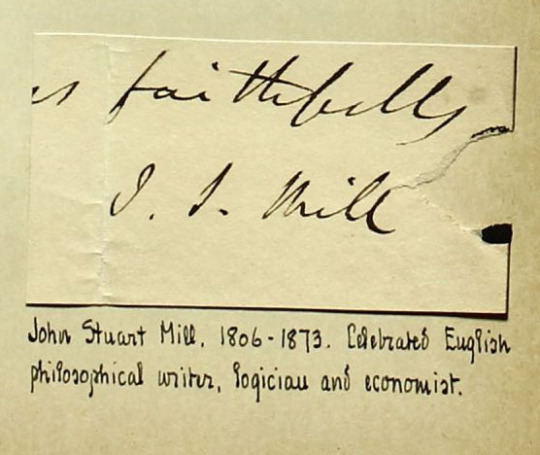
Caption reads: John Stuart Mill, 1806 - 1873. Celebrated English philosophical writer, logician and economist.
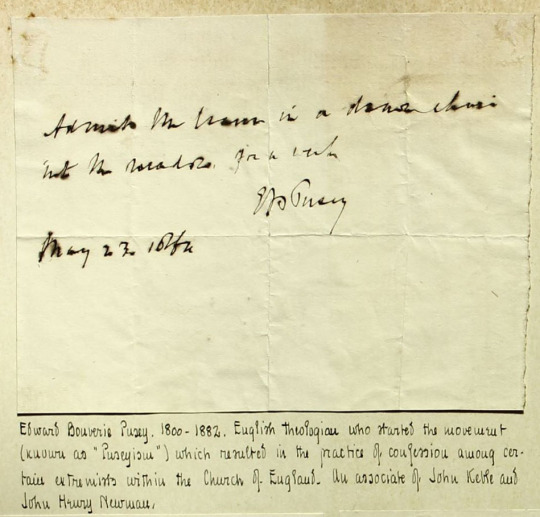
Caption reads: Edward Bouverie Pusey. 1800 - 1882. English theologian who started the movement (known as "Puseyism") which resulted in the practice of confession among certain extremists within the Church of England. An associate of John Keble and John Henry Newman.

Caption reads: Maria Taglioni. 1804 - 1884. Celebrated ballet dancer, mentioned by Thackery and Balzac. Married Comte Gilbert de Voisins.
#gordon russell west#famous signatures#famous autographs#susan b. anthony#william cobbett#william hone#sir edwin henry landseer#john stuart mill#edward bouverie pusey#maria taglioni#special collections#rice university#george grote
3 notes
·
View notes
Text
The Band of Brothers
In august 1798, immediately after the battle of the nile, Nelson captains formed the Egyptian club. Their first action was to present their admiral with a sword and a portrait.

Presentation sword, thought to be a replica of the sword presented to Vice-Admiral Horatio Nelson (1758-1805), by the Captains of the Fleet after the Victory of the Nile on the 1st August 1798.
Out of these club the band of Brothers was formed. As Nelson mentioned again and again, referring to Shakespeare's play Henry V - We few, we happy few, we band of brothers. The original band of brothers was forged during the Mediterranean campaign and consisted of 15 people, included James Saumarez, Samuel Hood, Thomas Foley, Henry Darby, Thomas Hardy, Alexander Ball and Edward Berry, Ralph Miller.

The Battle of the Nile, August 1-3, 1798, by William Anderson (1757-1837)
Of the officers who served with him at the Nile, 13 would later reach flag rank. The exceptions were Westcott, killed during the battle, and Miller, who was killed during an accidental explosion aboard his ship in 1799 at the siege of Acre. Some of the surviving brothers would serve under Nelson again. At the Battle of Copenhagen in 1801, Hardy had command of his own ship, whilst Foley was Nelson's flag captain. Thompson was also present, losing a leg in the action. Hardy was Nelson's flag captain aboard HMS Victory at Trafalgar, where Berry also commanded a ship.
Later brothers included Thomas Troubridge and Richard Keats. It is a measure of Nelsons greatness that although he has both vain and quick tempered, he was able to command the absolute devotion of the best officers of his time. This devotion he returned. Ball said:."..to his officers, his men, to the particular ships themselves, his affections were as steady and ardent as those of a lover." A later member, Geoff Duff said: " He is so good and pleasant a man that we all wish to do what he likes without any kind of orders." Coming from a relatively humble background. Nelson showed that aristocratic hauteur was not essential to high command.
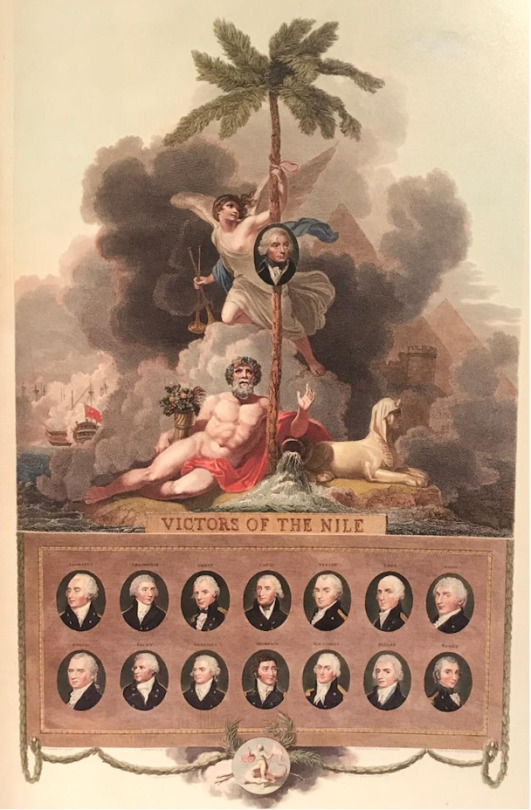
The original “band of brothers” by John Landseer; Robert Bowyer; Robert Smirke; William Bromley, 1803 .As Nelson said after the Battle of the Nile in 1798, ‘Victory is not a name strong enough for such a scene’. His captains are all commemorated in this celebratory engraving published five years later; Thomas Foley, Samuel Hood, Sir James Saumarez, David Gould, Ralph Miller, Sir Edward Berry, Thomas Louis, John Peyton, Henry Darby, George Westcott (killed in the battle), Thomas Thompson, Alexander Ball, Benjamin Hallowell, Thomas Troubridge and Thomas Hardy. Nelson was made Baron Nelson of the Nile, and adopted the motto ‘Palmam qui meruit ferat’ (Let he who has earned it bear the Palm).
Not only, as at Copenhagen, would he disregard the orders of superiors if he judged them mistaken; he also would take his captains into his confidence, fostering a spirit of mutual dependence. The qualities of leadership in which he excelled, he encouraged in others: aggression without recklessness, imagination; determination; painstaking logistics. His determination to forge an elite was apparent even in the appearance of his ships, with their Nelson chequer paintwork.
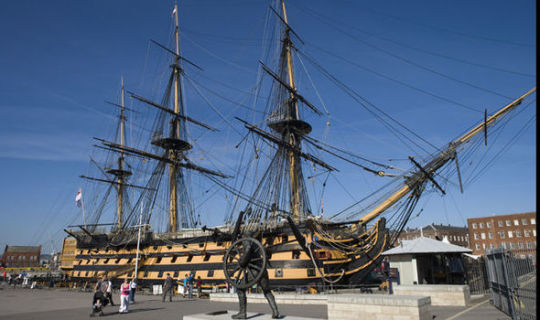
The Victory with her Nelson chequer paintwork
The spirit of teamwork was furthered by the signalling methods of Howe, Kempenfelt and Home Popham, resulting, after 1790, in less rigid Fighting Instructions and thus increased flexibility in command. Flexibility and trust were, indeed, Nelsons watchwords, never better expressed than in his message to Collingwood on 9 October 1805 : “I send you my plan of attack...but my dear friend, it is to place you perfectly at ease respecting my intentions, and to give full scope to your judgement for carrying them into effect. We can, my dear Coll, have no little jealousies. "
Later the term band of brothers was always used to refer to all captains who were closely associated with Nelson. And Andrew Lambert noted that the term "band of brothers" has become a description of the captains of the Royal Navy in Nelson's day "....because it captures the unity and cohesion of a highly professional fighting force led by a brilliant admiral who inspired the people under his command with a sense of camaraderie, common aspiration and national pride.“. But it doesn't have much to do with the original anymore. The original consisted only these 15 men, so when you come across with this term, you should question whether it is the real Band of Brothers or just the description.
115 notes
·
View notes
Photo





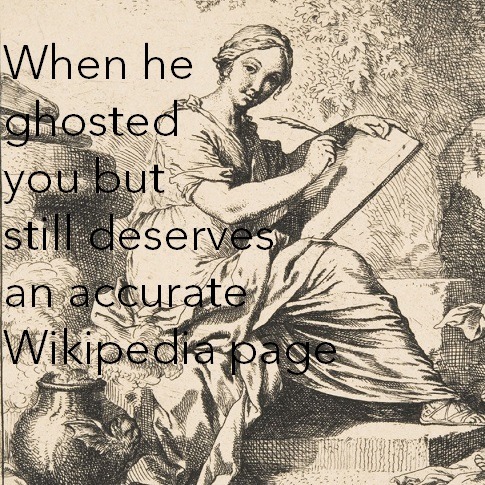


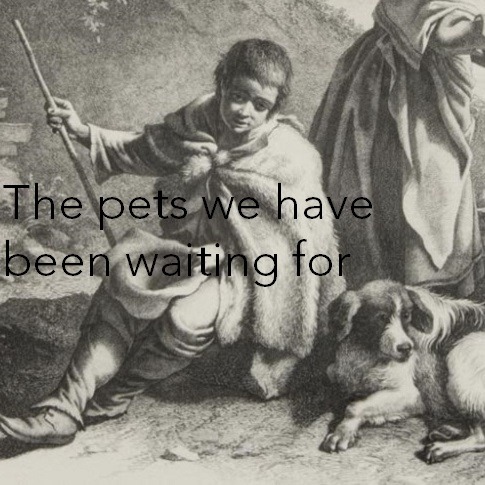

On the finale of Game of Thrones.
"Season's Greetings and Good Luck for 1940," 1940, by Fritz Eichenberg © Visual Artists and Galleries Assoc., Inc. (VAGA), New York
"The Bride of Lammermoor" (detail), by 1830, by Sir Edwin Landseer
"Dorie, Tom and I Play at Canson Beach," 1978, by Eugene Richards
"William, Prince of Orange," Late 19th–early 20th century, by Samuel Arlent-Edwards
"A City Wall with Man Falling from Ramparts," date unknown, by Simon Fokke
"Allegory of Writing" (detail), c. 1740, by Christian Wilhelm Ernst Dietrich
"Sicilian Bark," 1901, by Heinrich Kühn
"Portrait of a Lady," 1566, Netherlands
"Seated Herdsman and Woman Giving a Drink to a Boy" (detail), 1759–82, by Francesco Londonio
"Portrait of Thomas Eakins," c. 1920–25, by Susan Macdowell Eakins
#Game of Thrones#GOT#Game of Thrones finale#art#art museum#museum#art history#history#House Stark#Philadelphia Museum of Art#Philadelphia art museum#Philadelphia#Philly museum of art#Philly art museum#Philly
126 notes
·
View notes
Photo


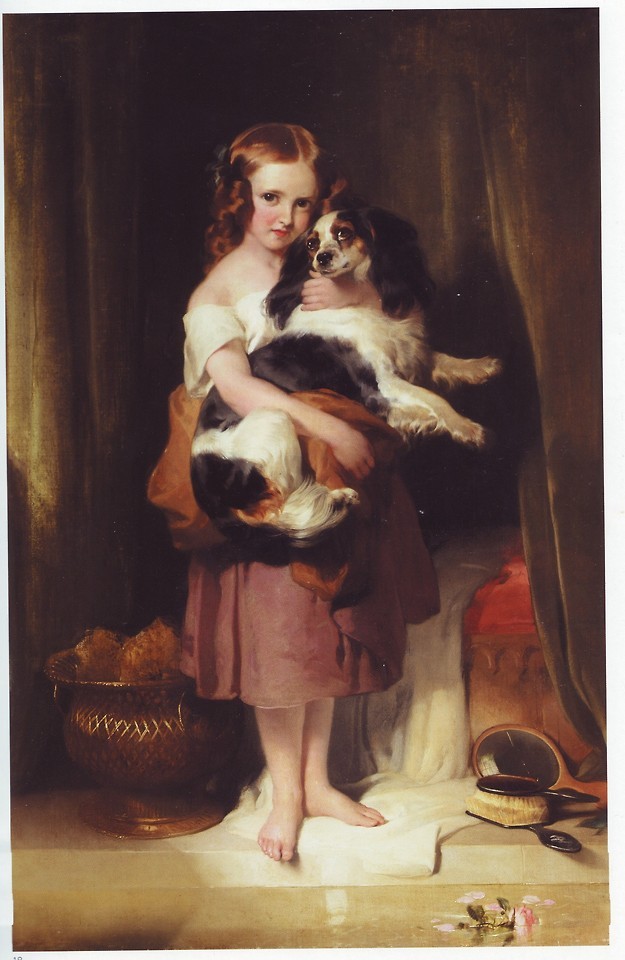




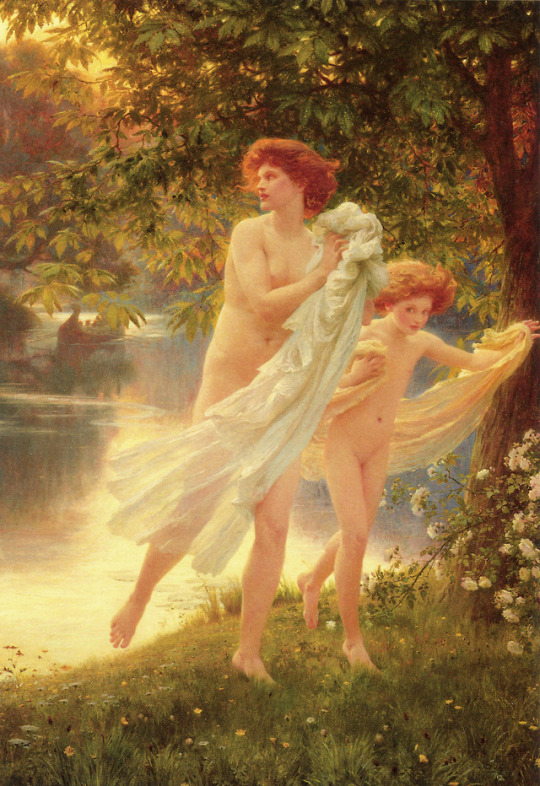


19th Century European Art (Victorian art) 102
sir-edward-john-poynter--british-1836---1919-erato-muse-of-poetry--1870
sir-edward-john-poynter-fishing-the-nymph-of-the-stream
sir-edwin-henry-landseer-1802-1873-portrait-of-miss-eliza-peel
sir-edwin-landseer---a-midsummer-nights-dream
sir-francis-bernard-dicksee-1853-1928-the-daughters-of-eve
sir-frank-dicksee-1853-1928-elsa-daughter-of-william-hall-esq
sir-frank-dicksee-1853-1928-paolo-and-francesca
sir-frank-dicksee-1853-1928-startled-1892
sir-frank-dicksee-1853-1928---the-duet
sir-frank-dicksee-british-1853---1928-penelope
3 notes
·
View notes
Photo
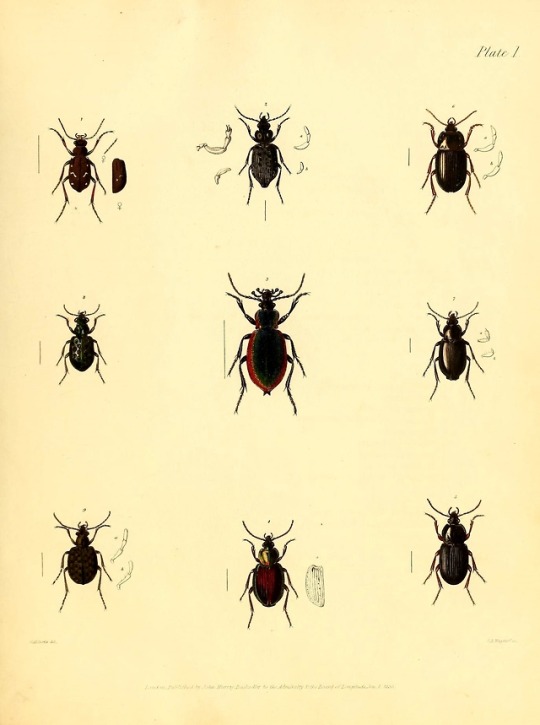


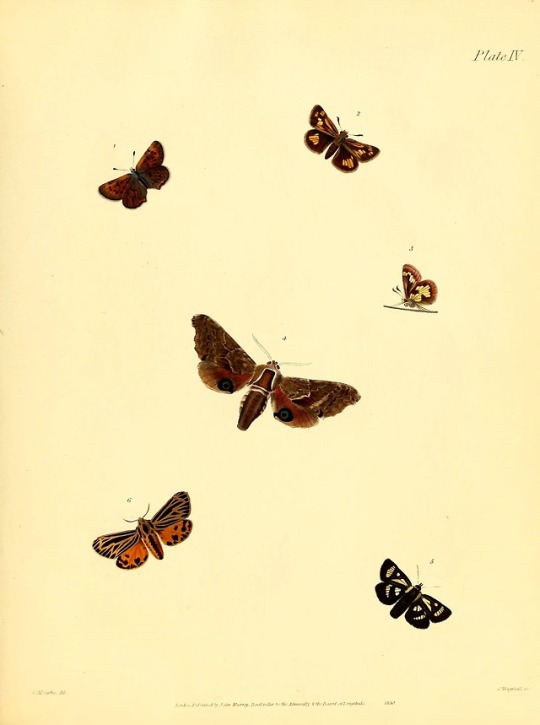
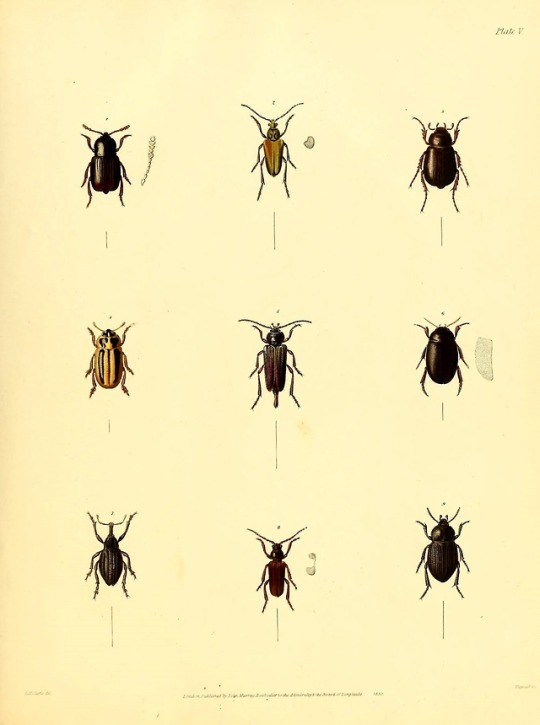



Fauna boreali-americana, or, The zoology of the northern parts of British America : containing descriptions of the objects of natural history collected on the late northern land expeditions under command of Captain Sir John Franklin, R.N.
By Richardson, John, Sir, 1787-1865
Curtis, Charles M., ca 1-95-1 , ill.
Franklin, John, Sir, 1786-1847
Hawkins, B. Waterhouse (Benjamin Waterhouse), 1807-1889 , ill.
Kirby, William, 1759-1850
Landseer, Thomas, 1795-1880 , ill.
Sowerby, James de Carle, 1787-1871
Swainson, William, 1789-1855
Wagstaff, Charles Edward, 1808-1850 , engraver.
Day & Haghe, , printer of plates.
Graf & Soret, , printer of plates.
Publication info London :John Murray,1829-1837.
Contributor: Smithsonian Libraries
Sponsor: Biodiversity Heritage Library
#scientific illustration#entomology#insects#scientific expedition#arctic region#canada#natural history#illustrations
106 notes
·
View notes
Text
Trafalgar Square
Trafalgar Square is a public space and tourist attraction in central London, United Kingdom, built around the area formerly known as Charing Cross. It is in the borough of the City of Westminster. At its centre is Nelson's Column, which is guarded by four lion statues at its base. There are a number of statues and sculptures in the square, with one plinth displaying changing pieces of contemporary art. The square is also used for political demonstrations and community gatherings, such as the celebration of New Year's Eve.
The name commemorates the Battle of Trafalgar (1805), a British naval victory of the Napoleonic Wars over France. The original name was to have been "King William the Fourth's Square", but George Ledwell Taylor suggested the name "Trafalgar Square".[1]
In the 1820s, George IV engaged the architect John Nash to redevelop the area. Nash cleared the square as part of his Charing Cross Improvement Scheme. The present architecture of the square is due to Sir Charles Barry and was completed in 1845.
Trafalgar Square is owned by the Queen in Right of the Crown, and managed by the Greater London Authority, while Westminster City Council owns the roads around the square, including the pedestrianised area of the North Terrace.[2]
The square consists of a large central area with roadways on three sides, and a terrace to the north, in front of the National Gallery. The roads around the square form part of the A4 road.The square was formerly surrounded by a one-way traffic system, but works completed in 2003 reduced the width of the roads and closed the northern side to traffic.[3]
Nelson's Column is in the centre of the square, flanked by fountains designed by Sir Edwin Lutyens in 1937-9 as replacements for two earlier fountains of Peterhead granite (now in Canada), and guarded by four monumental bronze lions sculpted by Sir Edwin Landseer. The column is topped by a statue of Horatio Nelson, the vice admiral who commanded the British Fleet at Trafalgar.
On the north side of the square is the National Gallery and to its east St Martin-in-the-Fields church. The square adjoins The Mall entered through Admiralty Arch to the southwest. To the south is Whitehall, to the east Strand and South Africa House, to the north Charing Cross Road and on the west side Canada House.
From the time of Edward I to the early nineteenth century, most of the area now occupied by Trafalgar Square was the site of the King's Mews, which stretched north from the position of the original Charing Cross, where the Strand from the City met Whitehall, coming north from Westminster.
Clearance and Development
From 1732, the King's Mews were divided into the Great Mews and the smaller Green Mews to the north by the Crown Stables, a large block, built to the designs of William Kent. Its site is now occupied by the National Gallery. The Royal Mews were transferred to Pimlico in the 1820s, and the stable block used as a menagerie, and for the storage of public records, until its demolition in 1835.[4] In 1826 the Commissioners of H.M. Woods, Forests and Land Revenues instructed John Nash to draw up plans for clearing a large area south of Kent’s stable block, and as far east as St Martin’s Lane. His plans left open the whole area of what was to become Trafalgar Square, except for a block in the centre, which he reserved for a new building for the Royal Academy.[5] They also involved the demolition and redevelopment of an area of buildings between St Martin’s Lane and the Strand, and the construction of a road (now called Duncannon Street) across the churchyard of St Martin-in-the-Fields.[6] The Charing Cross Act was passed in 1826 and clearance of the ground started soon after.[5]
After the initial clearance, development of the square progressed slowly.
The National Gallery was built on the north side in 1832-8 to a design by William Wilkins,[5] and in 1837 the Treasury approved Wilkins’ plan for the laying out of the square itself, but it was not put into effect.[7] In April 1840,[8] Wilkins having died in the meantime,[5] new plans by Charles Barry were accepted, and construction started within weeks.[8] For Barry, as for Wilkins, a major consideration was increasing the visual impact of the National Gallery, which had been widely criticised for its lack of grandeur. He dealt with the complex sloping site by excavating the main area of the square down to the level of the footway between Cockspur Street and the Strand,[9] and constructing a fifteen foot high balustraded terrace with a roadway on the north side, with steps at each end leading down to the main level.[8]
Wilkins had proposed a similar solution, but with a central flight of steps.[7] Plinths were provided for sculpture and pedestals for lighting. All the stonework was of Aberdeen granite. The estimated budget, excluding paving and sculptures, was £11,000.[8] The earth removed was used to level Green Park.[9] The next year it was decided that two fountains should be included in the layout.[10] The square was originally paved with tarmacadam. This was replaced with stone in the 1920s.[11]
Nelson's Column
Nelson’s Column had been planned independently of Barry’s work. In 1838 a Nelson Memorial Committee had approached the government, proposing that a monument to the victor of Trafalgar, funded by public subscription, should be erected in the square, and the government had provisionally agreed. A competition was held, the winning design, by the architect William Railton, being for a Corinthian column topped by a statue of Nelson, with an overall height of more than 200 feet, guarded by four sculpted lions. The design was approved, with the proviso that the overall height should be reduced to 170 feet, and construction began in 1840.[8] The main construction of the column was completed, and the statue raised, in November 1843.[12] However, the last of bronze reliefs on the pedestal of the column was not installed until May 1854, and The four lions, although part of the original design, were only added in 1867.[13]
Barry was unhappy about Nelson’s column being placed in the square. In July 1840, when its foundations had already been laid, he told a parliamentary select committee "it would in my opinion be desirable that the area should be wholly free from all insulated objects of art".[8]
Opening
The hoardings were removed and the square opened to the public on 1 May 1844, although the asphalt paving was still soft, and the fountains were not playing. There was still a hoarding around the base of Nelson’s column, which was to remain for some years, and some of its upper scaffolding remained in place.[14]
The square has become a social and political focus for visitors and Londoners alike, developing over its history from "an esplanade peopled with figures of national heroes, into the country's foremost place politique", as historian Rodney Mace has written. Its symbolic importance was demonstrated in 1940 when the Nazi SS developed secret plans to transfer Nelson's Column to Berlin following an expected German invasion, as related by Norman Longmate in If Britain Had Fallen (1972).
Redevelopment
A major redevelopment of the square led by WS Atkins with Foster and Partners as sub-consultants was completed in 2003. The work involved closing the main eastbound road along the north side, diverting the traffic around the other three sides of the square, demolishing the central section of the northern retaining wall and inserting a wide set of steps leading up to a pedestrianised terrace in front of the National Gallery. The construction includes two lifts for disabled access, public toilets, and a small café. Previously, access between the square and the Gallery was by two crossings at the northeast and northwest corners of the square.[15]
#Trafalgar Square#Royal Mews#Nelson#London#George Ledwell Taylor#Edwin Lutyens#Charles Barry#Canada House
1 note
·
View note
Text
Starting the project!
When we were given with the project brief and asked to choose from the artwork, I was definitely overwhelmed to find that there were 122,937 choices to choose from. Well, 77,568 in my case because I just stuck to the artworks category. We were given a short amount of time to choose 5 pieces so I started choosing. The method I went with choosing from this vast number of choices was just first impression. I opened up the notepad and added the links that were appealing to me at the first glance. Although I would like to go beyond this method and to do research on each piece before zeroing in on one because I’d feel uneasy about whether there exists a better option, I wouldn’t have enough time, obviously. But using this method, maybe I could find a piece that I have a good first impression on and would instantly click and from there, build a base with my passion for it. So with this, I went ahead and chose this pieces:
https://www.tate.org.uk/art/artists/elizabeth-blackadder-760
https://www.tate.org.uk/art/artists/rut-blees-luxemburg-3652
https://www.tate.org.uk/art/artists/edward-blore-2229
https://www.tate.org.uk/art/artists/sandra-blow-770
https://www.tate.org.uk/art/artists/mel-bochner-772
https://www.tate.org.uk/art/artists/gilles-boisvert-775
https://www.tate.org.uk/art/artists/sir-muirhead-bone-778
https://www.tate.org.uk/art/artists/lee-bontecou-782
https://www.tate.org.uk/art/artists/jonathan-borofsky-784
https://www.tate.org.uk/art/artists/comte-regis-de-bouvier-de-cachard-790
https://www.tate.org.uk/art/artists/denis-bowen-4381
https://www.tate.org.uk/art/artists/jake-berthot-2234
https://www.tate.org.uk/art/artists/robert-bevan-748
https://www.tate.org.uk/art/artists/andre-bicat-749
https://www.tate.org.uk/art/artists/charles-biederman-750
https://www.tate.org.uk/art/artists/alexander-benois-738
https://www.tate.org.uk/art/artists/m-caroline-berman-17855
https://www.tate.org.uk/art/artists/avigdor-arikha-661
https://www.tate.org.uk/art/artists/fikret-atay-6630
https://www.tate.org.uk/art/artists/william-alexander-2470
https://www.tate.org.uk/art/artists/henry-anderton-8
https://www.tate.org.uk/art/artists/peter-paul-benazech-2549
https://www.tate.org.uk/art/artists/john-boyne-2482
https://www.tate.org.uk/art/artists/mark-bradford-9242
https://www.tate.org.uk/art/artists/hercules-brabazon-brabazon-50
https://www.tate.org.uk/art/artists/robert-brandard-2414
https://www.tate.org.uk/art/artists/andre-breton-807
https://www.tate.org.uk/art/artists/stefan-baran-692
https://www.tate.org.uk/art/artists/bernard-brett-808
https://www.tate.org.uk/art/artworks/olsson-moonlit-shore-n02787
https://www.tate.org.uk/art/artworks/shaw-scenes-from-the-passion-late-t07945
https://www.tate.org.uk/art/artworks/holzer-truisms-t03959
https://www.tate.org.uk/art/artworks/turner-peace-burial-at-sea-n00528
https://www.tate.org.uk/art/artworks/braque-bottle-and-fishes-t00445
https://www.tate.org.uk/art/artworks/cozens-a-blot-landscape-composition-t08114
https://www.tate.org.uk/art/artworks/whistler-nocturne-blue-and-silver-chelsea-t01571
https://www.tate.org.uk/art/artworks/martin-the-destruction-of-pompei-and-herculaneum-n00793
https://www.tate.org.uk/art/artworks/lowry-industrial-landscape-t00111
https://www.tate.org.uk/art/artworks/lichtenstein-brushstroke-p07354
https://www.tate.org.uk/art/artworks/nash-totes-meer-dead-sea-n05717
https://www.tate.org.uk/art/artworks/martin-the-great-day-of-his-wrath-n05613
https://www.tate.org.uk/art/artworks/whistler-nocturne-blue-and-gold-old-battersea-bridge-n01959
https://www.tate.org.uk/art/artworks/cozens-in-the-farnese-gardens-rome-t08117
https://www.tate.org.uk/art/artworks/malevich-dynamic-suprematism-t02319
https://www.tate.org.uk/art/artworks/wearing-im-desperate-p78348
https://www.tate.org.uk/art/artworks/lowry-the-pond-n06032
https://www.tate.org.uk/art/artworks/orr-farm-p03133
https://www.tate.org.uk/art/artworks/thornton-norfolk-farm-p06815
https://www.tate.org.uk/art/artworks/richter-abstract-painting-726-t06600
https://www.tate.org.uk/art/artworks/man-ray-indestructible-object-t07614
https://www.tate.org.uk/art/artworks/miro-women-and-bird-in-the-moonlight-n06007
https://www.tate.org.uk/art/artworks/morris-untitled-t01532
https://www.tate.org.uk/art/artworks/rae-maybe-you-can-live-on-the-moon-in-the-next-century-t15083 (!!!!!)
https://www.tate.org.uk/art/artworks/cozens-the-brow-of-a-hill-t08759
https://www.tate.org.uk/art/artworks/cozens-landscape-with-rocks-and-water-t08845
https://www.tate.org.uk/art/artworks/derain-the-pool-of-london-n06030
https://www.tate.org.uk/art/artworks/turner-ancient-rome-agrippina-landing-with-the-ashes-of-germanicus-n00523
https://www.tate.org.uk/art/artworks/moritz-204-blue-house-t13960
https://www.tate.org.uk/art/artworks/cozens-rocky-bay-scene-t08044
https://www.tate.org.uk/art/artworks/cozens-a-large-tree-over-water-t08016
https://www.tate.org.uk/art/artworks/lichtenstein-explosion-p01796
https://www.tate.org.uk/art/artworks/wyn-evans-inverse-reverse-perverse-t07935
https://www.tate.org.uk/art/artworks/souza-crucifixion-t06776
https://www.tate.org.uk/art/artworks/picasso-black-jug-and-skull-p11365
https://www.tate.org.uk/art/artworks/warhol-mickey-mouse-ar00335
https://www.tate.org.uk/art/artworks/gonzalez-torres-untitled-double-portrait-t13309
https://www.tate.org.uk/art/artworks/constable-dedham-lock-and-mill-n02661
https://www.tate.org.uk/art/artworks/bonnard-coffee-n05414
https://www.tate.org.uk/art/artworks/wall-a-view-from-an-apartment-t12219
https://www.tate.org.uk/art/artworks/turner-the-full-moon-over-water-d40138
https://www.tate.org.uk/art/artworks/leger-mechanical-elements-t06798
https://www.tate.org.uk/art/artworks/emin-hate-and-power-can-be-a-terrible-thing-t11891
https://www.tate.org.uk/art/artworks/bacon-second-version-of-triptych-1944-t05858
https://www.tate.org.uk/art/artworks/smith-the-girl-chewing-gum-t13237
https://www.tate.org.uk/art/artworks/horn-in-the-triangle-t07856
https://www.tate.org.uk/art/artworks/turner-tintern-abbey-the-crossing-and-chancel-looking-towards-the-east-window-d00374
https://www.tate.org.uk/art/artworks/turner-the-fall-of-anarchy-n05504
https://www.tate.org.uk/art/artworks/rego-war-t12024
https://www.tate.org.uk/art/artworks/oulton-untitled-p11197
https://www.tate.org.uk/art/artworks/cozens-a-ruined-building-t08036
https://www.tate.org.uk/art/artworks/constable-chain-pier-brighton-n05957
https://www.tate.org.uk/art/artworks/caulfield-after-lunch-t02033
https://www.tate.org.uk/art/artworks/turner-the-battle-of-trafalgar-as-seen-from-the-mizen-starboard-shrouds-of-the-victory-n00480
https://www.tate.org.uk/art/artworks/ruscha-pay-nothing-until-april-ar00047
https://www.tate.org.uk/art/artworks/landseer-dignity-and-impudence-n00604
https://www.tate.org.uk/art/artworks/judd-untitled-t07951
https://www.tate.org.uk/art/artworks/inshaw-the-badminton-game-t03189
https://www.tate.org.uk/art/artworks/bourgeois-10-am-is-when-you-come-to-me-al00345
https://www.tate.org.uk/art/artworks/bacon-figure-in-a-landscape-n05941
https://www.tate.org.uk/art/artworks/wright-vesuvius-in-eruption-with-a-view-over-the-islands-in-the-bay-of-naples-t05846
https://www.tate.org.uk/art/artworks/art-language-portrait-of-v-i-lenin-with-cap-in-the-style-of-jackson-pollock-iii-t12406
https://www.tate.org.uk/art/artworks/vlaminck-landscape-near-martigues-t01254
https://www.tate.org.uk/art/artworks/whistler-crepuscule-in-flesh-colour-and-green-valparaiso-n05065
https://www.tate.org.uk/art/artworks/wilson-meleager-and-atalanta-t03366
https://www.tate.org.uk/art/artworks/williams-thunderstorm-with-the-death-of-amelia-t00519
https://www.tate.org.uk/art/artworks/paolozzi-bash-p07414
https://www.tate.org.uk/art/artworks/lichtenstein-sandwich-and-soda-p77811
https://www.tate.org.uk/art/artworks/karamustafa-memory-of-a-square-t13846
https://www.tate.org.uk/art/artworks/turner-moonlight-a-study-at-millbank-n00459
https://www.tate.org.uk/art/artworks/sutherland-devastation-1941-east-end-burnt-paper-warehouse-n05737
https://www.tate.org.uk/art/artworks/gainsborough-wooded-landscape-with-a-peasant-resting-n01283
https://www.tate.org.uk/art/artworks/hodgkin-undergrowth-n05558
https://www.tate.org.uk/art/artworks/oliver-interior-pierrefroide-n04802
https://www.tate.org.uk/art/artworks/turner-a-disaster-at-sea-n00558
https://www.tate.org.uk/art/artworks/cozens-a-mountain-pool-t08859
https://www.tate.org.uk/art/artworks/newton-the-surrey-canal-camberwell-n05343
https://www.tate.org.uk/art/artworks/mehretu-mogamma-a-painting-in-four-parts-part-3-t13997
https://www.tate.org.uk/art/artworks/magritte-the-future-of-statues-t03258
https://www.tate.org.uk/art/artworks/egg-past-and-present-no-3-n03280
https://www.tate.org.uk/art/artworks/ai-tree-t14630
https://www.tate.org.uk/art/artworks/turner-childe-harolds-pilgrimage-italy-n00516
https://www.tate.org.uk/art/artworks/nolan-antarctica-t03558
https://www.tate.org.uk/art/artworks/sickert-brighton-pierrots-t07041
https://www.tate.org.uk/art/artworks/martin-i-love-the-whole-world-al00193
https://www.tate.org.uk/art/artworks/cozens-a-man-seated-on-a-hillock-under-a-tree-t08047
https://www.tate.org.uk/art/artworks/turner-the-tenth-plague-of-egypt-n00470
https://www.tate.org.uk/art/artworks/opie-imagine-you-are-walking-p78310
https://www.tate.org.uk/art/artworks/hook-young-dreams-n01513
https://www.tate.org.uk/art/artworks/gainsborough-sunset-carthorses-drinking-at-a-stream-n00310
https://www.tate.org.uk/art/artworks/gainsborough-landscape-with-gipsies-n05845
https://www.tate.org.uk/art/artworks/cozens-an-italian-villa-among-trees-t08860
https://www.tate.org.uk/art/artworks/constable-hampstead-heath-with-a-rainbow-n01275
https://www.tate.org.uk/art/artworks/constable-salisbury-cathedral-from-the-meadows-n01814
https://www.tate.org.uk/art/artworks/lewis-workshop-t01931
https://www.tate.org.uk/art/artworks/knights-the-deluge-t05532
https://www.tate.org.uk/art/artworks/kiff-triptych-shadows-t04888
https://www.tate.org.uk/art/artworks/hiorns-untitled-t12456
https://www.tate.org.uk/art/artworks/hockney-an-image-of-celia-p20116
https://www.tate.org.uk/art/artworks/de-loutherbourg-an-avalanche-in-the-alps-t00772
https://www.tate.org.uk/art/artworks/brown-trouble-in-paradise-t07606
https://www.tate.org.uk/art/artworks/bowling-mirror-t13936
https://www.tate.org.uk/art/artworks/bomberg-in-the-hold-t00913
https://www.tate.org.uk/art/artworks/vieira-da-silva-paris-t00245
https://www.tate.org.uk/art/artworks/turner-rocky-bay-with-figures-n01989
https://www.tate.org.uk/art/artworks/kossoff-christ-church-spitalfields-morning-t06735
https://www.tate.org.uk/art/artworks/kepes-hand-on-black-ground-p80561
https://www.tate.org.uk/art/artworks/hofmann-pompeii-t03256
https://www.tate.org.uk/art/artworks/gowda-behold-t14118
https://www.tate.org.uk/art/artworks/francis-around-the-blues-t00634
https://www.tate.org.uk/art/artworks/constable-stoke-by-nayland-n01819
https://www.tate.org.uk/art/artworks/walker-grub-for-sharks-a-concession-to-the-negro-populace-t12906
https://www.tate.org.uk/art/artworks/turner-chichester-canal-t03885
https://www.tate.org.uk/art/artworks/polke-untitled-triptych-t11855
https://www.tate.org.uk/art/artworks/ward-gordale-scar-a-view-of-gordale-in-the-manor-of-east-malham-in-craven-yorkshire-the-n01043
https://www.tate.org.uk/art/artworks/rosenquist-time-door-time-dor-p12234 (!!!!!!)
https://www.tate.org.uk/art/artworks/smith-home-of-the-welder-l01025
https://www.tate.org.uk/art/artworks/soutine-landscape-at-ceret-t00692
https://www.tate.org.uk/art/artworks/stella-juam-p12327
https://www.tate.org.uk/art/artworks/therrien-red-room-ar00702
https://www.tate.org.uk/art/artworks/turner-london-from-greenwich-park-n00483
https://www.tate.org.uk/art/artworks/adams-rainbow-painting-i-t01127
https://www.tate.org.uk/art/artworks/ayres-antony-and-cleopatra-t03458
https://www.tate.org.uk/art/artworks/bowling-spreadout-ron-kitaj-t04889
https://www.tate.org.uk/art/artworks/constable-the-glebe-farm-n01274
https://www.tate.org.uk/art/artworks/cozens-landscape-with-distant-hills-t08000
https://www.tate.org.uk/art/artworks/cozens-a-wooded-path-t08199
https://www.tate.org.uk/art/artworks/cozens-a-wooded-headland-with-castle-t08039
https://www.tate.org.uk/art/artworks/doig-blotter-p11478
https://www.tate.org.uk/art/artworks/henderson-untitled-no-8-shattered-glass-t12443
https://www.tate.org.uk/art/artworks/moran-rooms-of-the-mind-t13035
https://www.tate.org.uk/art/artworks/lichtenstein-composition-ii-al00379
https://www.tate.org.uk/art/artworks/cozens-a-river-beyond-a-wooded-cliff-to-right-t08032
https://www.tate.org.uk/art/artworks/cozens-blot-with-creek-and-church-t08862
https://www.tate.org.uk/art/artworks/cotman-llangollen-t08237
https://www.tate.org.uk/art/artworks/constable-the-mill-stream-verso-night-scene-with-bridge-n01816
https://www.tate.org.uk/art/artworks/brooks-boon-t00253
https://www.tate.org.uk/art/artworks/turner-venice-maria-della-salute-n00539
https://www.tate.org.uk/art/artworks/turner-the-goddess-of-discord-choosing-the-apple-of-contention-in-the-garden-of-the-n00477
https://www.tate.org.uk/art/artworks/turner-the-opening-of-the-wallhalla-1842-n00533
https://www.tate.org.uk/art/artworks/turner-the-ponte-delle-torri-spoleto-n02424
https://www.tate.org.uk/art/artworks/turner-stormy-sea-with-blazing-wreck-n04658
https://www.tate.org.uk/art/artworks/rae-untitled-yellow-t06482
https://www.tate.org.uk/art/artworks/piper-covehithe-church-t03818
https://www.tate.org.uk/art/artworks/pissarro-a-corner-of-the-meadow-at-eragny-n06003
https://www.tate.org.uk/art/artworks/richter-strip-921-6-t14351
https://www.tate.org.uk/art/artworks/hodgkin-rain-t05771
https://www.tate.org.uk/art/artworks/hodgkins-the-lake-n05130
https://www.tate.org.uk/art/artworks/green-casimir-dupont-t03259
https://www.tate.org.uk/art/artworks/dubuffet-hopes-and-options-t01575
https://www.tate.org.uk/art/artworks/turner-sea-and-sky-d25486
https://www.tate.org.uk/art/artworks/turner-norham-castle-on-the-river-tweed-d18148
https://www.tate.org.uk/art/artworks/turner-fire-at-the-grand-storehouse-of-the-tower-of-london-d27846
https://www.tate.org.uk/art/artworks/turner-dunstanburgh-castle-d25313
https://www.tate.org.uk/art/artworks/turner-cassiobury-park-reaping-n04663
https://www.tate.org.uk/art/artworks/turner-caernarvon-castle-n01867
https://www.tate.org.uk/art/artworks/turner-bonneville-savoy-d08164
https://www.tate.org.uk/art/artworks/trevelyan-the-potteries-t07040
https://www.tate.org.uk/art/artworks/johns-dancers-on-a-plane-t03242
https://www.tate.org.uk/art/artworks/innes-the-waterfall-n03804
https://www.tate.org.uk/art/artworks/hook-home-with-the-tide-n01512
https://www.tate.org.uk/art/artworks/gogh-thatched-roofs-n04715
https://www.tate.org.uk/art/artworks/goeneutte-the-boulevard-de-clichy-under-snow-n04538
https://www.tate.org.uk/art/artworks/gallagher-untitled-ar00067
https://www.tate.org.uk/art/artworks/riopelle-perspectives-t00123
https://www.tate.org.uk/art/artworks/picasso-composition-p01718
https://www.tate.org.uk/art/artworks/nevinson-dance-hall-scene-t01913
https://www.tate.org.uk/art/artworks/nevinson-study-for-returning-to-the-trenches-t00249
https://www.tate.org.uk/art/artworks/kirkeby-composition-t13845
https://www.tate.org.uk/art/artworks/sutherland-entrance-to-a-lane-n06190
https://www.tate.org.uk/art/artworks/sutherland-black-landscape-t03085
https://www.tate.org.uk/art/artworks/sisley-the-small-meadows-in-spring-n04843
https://www.tate.org.uk/art/artworks/onley-landscape-p03225
https://www.tate.org.uk/art/artworks/oconnor-kersey-church-p06401
https://www.tate.org.uk/art/artworks/lambert-classical-landscape-t00211
https://www.tate.org.uk/art/artworks/klee-walpurgis-night-t00669
https://www.tate.org.uk/art/artworks/riley-fete-p78333
https://www.tate.org.uk/art/artworks/sutherland-devastation-1941-an-east-end-street-n05736
https://www.tate.org.uk/art/artworks/williams-upwey-landscape-t07016
https://www.tate.org.uk/art/artworks/turner-st-benedetto-looking-towards-fusina-n00534
https://www.tate.org.uk/art/artworks/cozens-a-lake-with-hills-and-buildings-t08015
https://www.tate.org.uk/art/artworks/agar-three-symbols-t00707
https://www.tate.org.uk/art/artworks/landseer-low-life-a00702
A lot... I know. But now I have a smaller range of choices, which is great! These are all the artworks that I liked by first glance or a brief reading of the description. Some reasons for my elimination of the other choices were some were portraits, some were unclear and it’s a bit hard to see for me, didn’t connect with, violent or risque, part of another project which I’m not sure would be allowed, and I would find difficult to apply to a gaming medium.
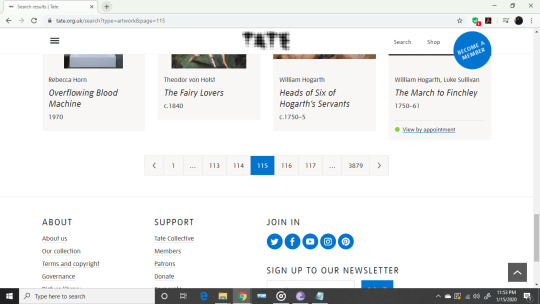
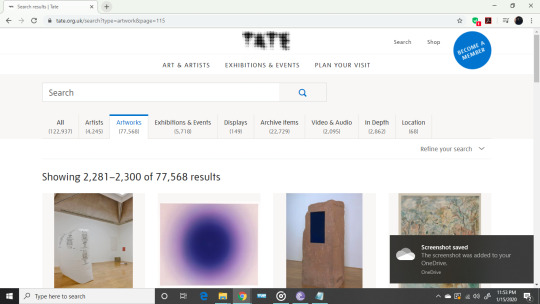
As seen above, I couldn’t completely go over all the options. But personally, I’m happy with the choices I have. I have 213 choices and hopefully, I’ll find something I’ll like there.
0 notes
Photo

Day 258 of 365 Photo Challenge. Nelson's Column is a monument in Trafalgar Square in the City of Westminster, Central London built to commemorate Admiral Horatio Nelson, who died at the Battle of Trafalgar in 1805. The monument was constructed between 1840 and 1843 to a design by William Railton at a cost of £47,000 (equivalent to £4,532,261 in 2018). It is a column of the Corinthian order built from Dartmoor granite. The Craigleith sandstone statue of Nelson is by E.H. Baily, and the four bronze lions on the base, added in 1867, were designed by Sir Edwin Landseer. The pedestal is decorated with four bronze relief panels, each 18 feet (5.5 m) square, cast from captured French guns. They depict the Battle of Cape St Vincent, the Battle of the Nile, the Battle of Copenhagen and the death of Nelson at Trafalgar. The sculptors were Musgrave Watson, William F. Woodington, John Ternouth and John Edward Carew, respectively. It was refurbished in 2006 at a cost of £420,000 (equivalent to £596,901 in 2018), at which time it was surveyed and found to be 14 feet 6 inches (4.42 m) shorter than previously supposed. The whole monument is 169 feet 3 inches (51.59 m) tall from the bottom of the pedestal to the top of Nelson's hat. #365photochallenge #photooftheday #london #nelsonscolumn #trafalgarsquare (at Nelson's Column) https://www.instagram.com/p/B2cjevVh4bR/?igshid=en4r5vv0a2kl
0 notes
